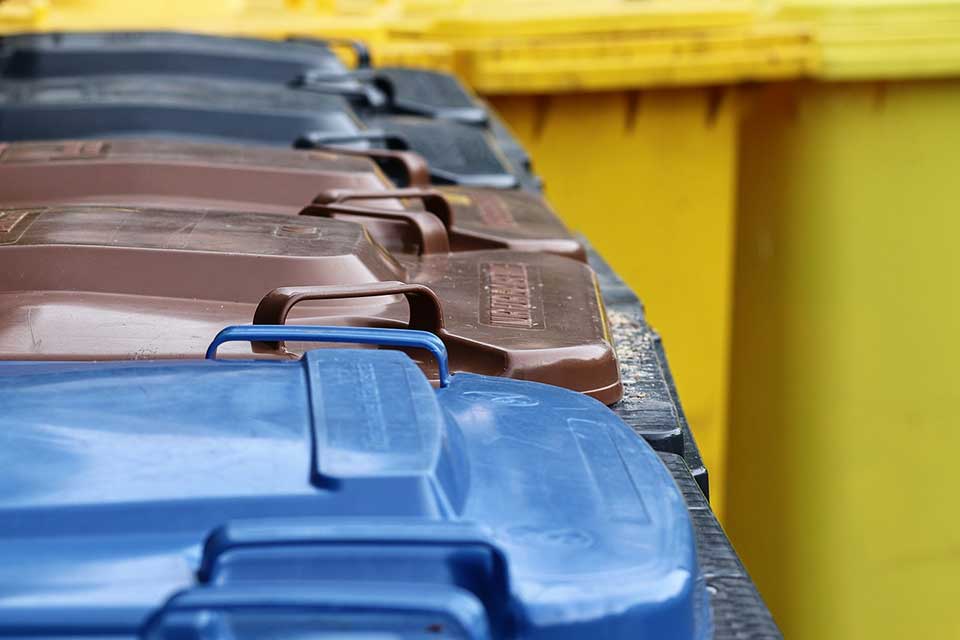What is the waste hierarchy?

You may have seen us talking about how reuse of materials such as cardboard boxes pushes the waste up the waste hierarchy, but what exactly is the waste hierarchy and how does reuse come into it?
How the Waste Hierarchy Works
The waste hierarchy ranks waste management options according to what is best for the environment, in order of importance from top to bottom:
Prevention
Preparing for Re-use
Recycling
Other recovery
Disposal
Waste hierarchy diagram

Let's look at these in more detail:
1. Prevention
In industry, prevention means designing carefully to reduce the use of materials, building products that last for longer, and using materials that are less hazardous or more easy to reuse and recycle. In a domestic setting, this means buying less and buying sustainable, reusable and recyclable products, which of course relies on manufacturers to prevent waste as much as possible in the first place. Where you cannot prevent waste by reducing materials and consumption, you would look to reuse as the next best thing.
2. Preparing for re-use
There are a range of actions that can be taken when preparing items for re-use. This could be quality checking, cleaning, sorting, repairing where necessary and refurbishing. It can apply to whole items or spare parts. If an item has been through this process and continues to have value for someone then it can be reused, often multiple times. This is the ideal scenario in a situation where an item is necessary, processes and materials have already been streamlined for efficiency, and resources are utilised carefully.
3. Recycling
Recycling is determined to be a process that turns waste into a new substance or product - 'new' does not have to mean different. Examples of recycling are:
- Pulping waste cardboard boxes to remanufacture into new boxes
- Using car tyres to make soles for shoes
- Processing aluminium to make new drinks cans, or glass for bottles
Recycling can also at times include composting but only if quality protocols are met. Large-scale composting is not available to much of the UK domestic market, so food waste ends up at the bottom of the hierarchy in disposal, ending up in landfill. There is great potential for improvement in this area.
4. Other recovery
'Other recovery' sounds vague doesn't it? When we talk about other forms of recovery we are looking towards:
- Anaerobic digestion (often used for food waste)
- Incineration with energy recovery (the conversion of waste into usable heat, electricity, or fuel)
These 'other recovery' options are ideal for waste materials that are non-recyclable or non-reusable. For any other material, waste should be handled in a method that places it higher in the waste hierarchy.
5. Disposal
At the bottom of the waste hierarchy is disposal, which occurs only as a last resort and ideally not at all. Disposal is material sent to landfill or incinerated without any energy recovery. Disposal has no benefits, and increases pollution while contributing to resource depletion. Avoid at all costs.
Resources
Gov.uk has a fantastic resource, the Waste Hierarchy Guidance PDF, that helps you apply the waste hierarchy to your unwanted byproducts, helping you to understand how best to manage waste and processing.
Also related is our blog post called Reduce, Reuse, Recycle: The 3 Rs of Waste Management
Featured Articles

December 08, 2025
Important dates for Christmas 2025
Here are some important dates to take note of so that you receive your boxes and packaging materials...

December 03, 2025
Options for Recycling Cardboard Boxes
How to recycle cardboard waste: a guide for business and the home The principles of recycling have b...

November 27, 2025
We are WINNERS of a National Recycling Award!
We're thrilled to announce a big win at the MRW National Recycling Awards 2025! Our pioneering cardb...

July 17, 2025
Sadlers becomes Sustainability West Midlands Member
Back in February this year we made the decision to join the Sustainability West Midlands network whi...